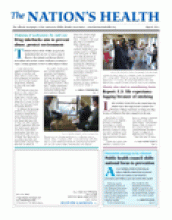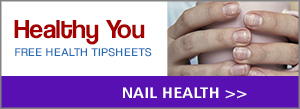Aiming to put the nation on a path to better health, the federal government in January released new dietary guidelines that urge Americans to cut back on sodium, sugar and saturated fat and fill half their plates with fresh fruits and vegetables.
Published jointly by the Department of Agriculture and Department of Health and Human Services, “2010 Dietary Guidelines for Americans” provides evidence-based nutritional guidance for promoting health, reducing the risk of chronic diseases and reducing the prevalence of overweight and obesity. With more than two-thirds of U.S. adults and at least one-third of children overweight or obese, the new guidelines place a strong emphasis on the need to cut calories and exercise more.
“These new and improved dietary recommendations give individuals the information to make thoughtful choices of healthier foods in the right portions and to complement those choices with physical activity,” said USDA Secretary Tom Vilsack. “The bottom line is that most Americans need to trim (their) waistlines to reduce the risk of developing diet-related chronic disease. Improving our eating habits is not only good for every individual and family, but also for our country.”
Published every five years since 1980, the guidelines form the basis of many nutrition education programs — including federal nutrition assistance initiatives such as school meals programs and Meals on Wheels for seniors — and dietary advice provided by health professionals. The new guidelines bring into greater focus the need to balance calories with physical activity, and encourage Americans to consume more healthy foods, including more vegetables, fruits, whole grains, fat-free and low-fat dairy products and seafood, and to consume less sodium, saturated and trans fats, added sugars and refined grains. The guidelines also call for effective policies to limit food and beverage marketing to children.
“This time around, the messages are clearer than in the past,” said APHA member Margo Wootan, DSc, nutrition policy director at the Center for Science in the Public Interest. “Rather than simply saying, ‘increase fruits and vegetables,’ the new guidelines recommend that people fill half their plate with fruits and vegetables. Rather than just giving the vague advice to lower sugar intake, it now recommends drinking water in place of soda and other sugary drinks, which are by far the largest source of sugar in Americans’ diets.”
Intended for Americans ages 2 and older, the new consumer-friendly guidelines include 23 key recommendations for the general population and six additional key recommendations for specific population groups, such as pregnant women. For their ability to improve public health, the recommendations are the most important messages within the guidelines and should be carried out in their entirety, according to HHS. For example, the guidelines recommend daily sodium intake be less than 2,300 milligrams for all Americans but no more than 1,500 milligrams for people 51 and older, blacks of any age and people with high blood pressure, diabetes or chronic kidney disease. According to federal statistics, the 1,500 milligram recommendation applies to about half of the U.S. population, including children and the majority of adults.
“The recommendations are important to all Americans, particularly African Americans and patients with chronic kidney disease,” said Stuart Linas, MD, FASN, chair of the American Society of Nephrology’s Hypertension Advisory Group. “High dietary salt worsens kidney disease in a number of ways, including causing higher blood pressure and increasing the effects of hormones, such as angiotensin, known to injure kidneys. Reducing dietary salt should reduce the number of patients requiring renal replacement therapy.”
Additional consumer-friendly advice and tools, including an updated food pyramid, will be released in the coming months.
For more information or to download “2010 Dietary Guidelines for Americans,” visit www.dietaryguidelines.gov.
- Copyright The Nation’s Health, American Public Health Association









